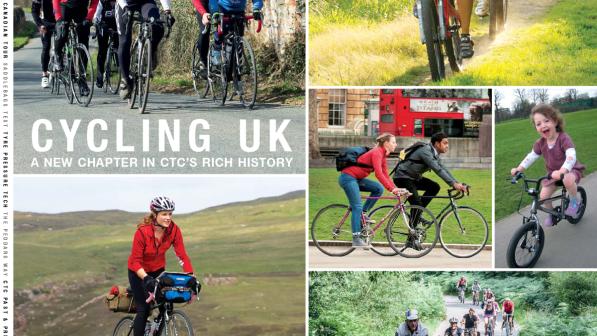Friction shifting

Roger Davies
If you use friction shifters, you can mix and match components without having to worry about indexing compatibility. If your bike has a drop handlebar, bar-end shifters are a convenient solution. The front shift lever is always friction operated, while the rear can generally be switched between indexed and friction options.
If your bike has a flat handlebar, friction thumbshifters are available. These are effectively bar-end shifters reconfigured to fit on top of the handlebar instead. For example, Dia-Compe’s non-indexed power ratchet shifters are available as bar-ends or thumbshifters (or even as down tube levers). Shimano and Microshift also make bar-end levers that can be found as thumbshifters. While bar-end shifters can be ordered from most bike shops, you may need to use a retailer that specialises in touring cycling (e.g. sjscycles.co.uk) to obtain friction thumbshifters.
One possible limitation is the amount of cable the rear shift lever will pull, which may not be enough to get the rear mech to travel across the entire range of rear sprockets. Check the lever’s compatibility when buying.
The rear mech must have enough capacity, or ‘wrap’, to keep the chain tensioned on all usable chainring and sprocket combinations. Add the difference between largest and smallest rear sprockets to that between largest and smallest chain rings, so 50-34 chain rings with an 11-32 cassette requires a rear mech capacity of 37T. The front mech must be suitable for a double or triple chainset depending on your choice.
A Rohloff Speedhub has an impressive 526% range; that is, top gear is 5.26 times as large as bottom gear. A comparable or even larger range is achievable if you combine a wide-ratio cassette (e.g. 11-34) with either an MTB trekking chainset (e.g. 48-36-26) or an ‘Alpine double’ (e.g. 42-24). As ever with touring, the key is having a low enough bottom gear.
I’d suggest a Shimano mountain bike rear hub to fit the 135mm rear dropout spacing, a 9-speed mountain bike cassette with 34T largest sprocket, matching chain, a Shimano 9-speed mountain bike rear mech, and either bar-end shifters or friction thumbshifters, as appropriate. Your choice of chainset and front derailleur will depend on just how low a gear you want. A road triple (e.g. 50-39-30) requires a road derailleur (such as a Shimano Sora triple); a 42-32-22 mountain bike triple requires a suitable mountain bike front derailleur (such as a Shimano Alivio triple); and a 48-38-26 mountain bike trekking triple will work with either.
Richard Hallett
Cycle’s Technical Editor


